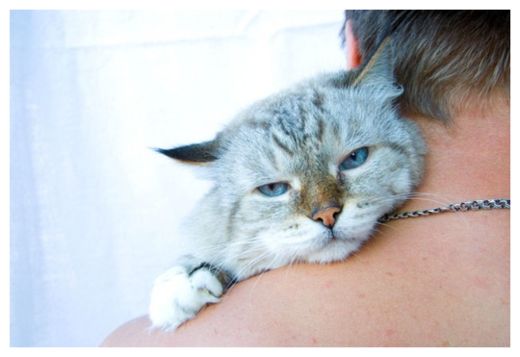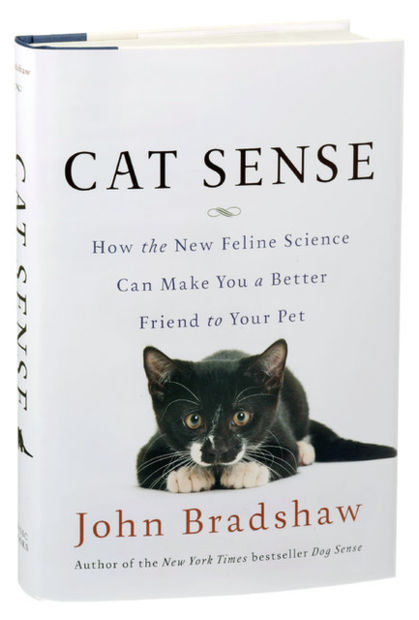
© Thinkstock
Cats have been man's other best friend for thousands of years, with the first felines coming into the lives of humans at least 9,500 years ago, based on a grave unearthed in 2004 in Cyprus that contained the remains of a cat with its possible human master.
Since then, cats have spread to Egypt and throughout the rest of the world and have quickly become the most popular domestic pet in the world today, outnumbering dogs as pets by three to one.
However, while cat lovers often view their cuddly fur balls as another dependent, rather than an actual cat, those fur balls tend to look at us in a somewhat different way.
According to
Dr. John Bradshaw, a British anthrozoologist of the University of Bristol, our cat friends look at us as just a larger, more docile version of themselves and has detailed his findings in a new book titled "Cat Sense," which was recently reviewed by
The New York Times.In his book, Bradshaw maintains that despite how much our pet cats infiltrate our daily lives, as can be seen in thousands of YouTube videos shared from around the world, cats are still essentially wild animals. And while most seem domesticated enough, they still have at least some wild elements about them.
If you sit and watch your cat long enough, you will see their wild side come through. Cats are hunters, and even living the domesticated life, they still want to hunt and continue to hone their skills in the form of what most people consider play time with kitty. But to the cat, this is considered a training exercise.
Bradshaw goes on to write about how cats came to be domesticated (if one can call it that) and how they have become the most popular pet species in the world. But more so, he writes about how cats specifically interact with us and how they view us.
Once it may have been considered that in the eyes of our feline friends we were considered their babies and they needed to care for us. But the new thinking, as Bradshaw has written, is that cats actually see us as the "Mama Cat." Although, as their matriarch, we are just not as intelligent as they are, according to Bradshaw.

© Patricia Wall/The New York Times
Of course, intelligence is all in the eye of the beholder and as cats see it, we cannot do the things that have become expected of cats, such as climbing curtains and turning mid-air for a perfect landing. So essentially, we are quite stupid.
However, stupidity aside, there are certain aspects of our cats' daily lives that show us that they look up to us as the "Mama Cat." Most of these aspects have been engrained in them through a strong social bond with their biological mother before humans took over. When a kitten purrs, it does so to signal their mamas to stay and feed them. When they knead their mama's belly it is to help keep the milk flowing.
According to Bradshaw, cats also have other signals that help us show signs that we are not only the mama cat but also a docile, or non-hostile, cat. These signals include rubbing against you or inviting you to stroke them. Also, an upright tail is a greeting sign between cats and "is probably the clearest way cats show their affection for us," Dr. Bradshaw writes in his book.
As previously mentioned, some experts believed that cats viewed us as kittens that need to be cared for and fed. This had come from the unpleasant finding of dead animals - mice, snakes, birds, etc. - that wind up on our doorsteps or kitchen floors every once and again.
Of course, Dr. Bradshaw has an explanation for this.
In his book, he writes that cats bring their prey into the house as a side effect of their deeply-instilled hunting strategy. This strategy involves sniffing out the scent marks that potential prey leave behind as a way to communicate with one another. Cats will typically sit downwind of such marks and wait for the prey to come to them. Because several cats can congregate in one hunting area, once a cat makes a catch, it takes its dinner to a much safer spot to eat it.
However, once a cat comes back home with its catch, it often remembers that the food that their larger counterparts have tastes so much better and they end up leaving the dead animal on the floor, writes Dr. Bradshaw.
So, while we may be viewed as the much larger and dumber cat, our fur balls still do rely on us for our good food at least. Perhaps we are not that dumb after all.
Reader Comments
to our Newsletter